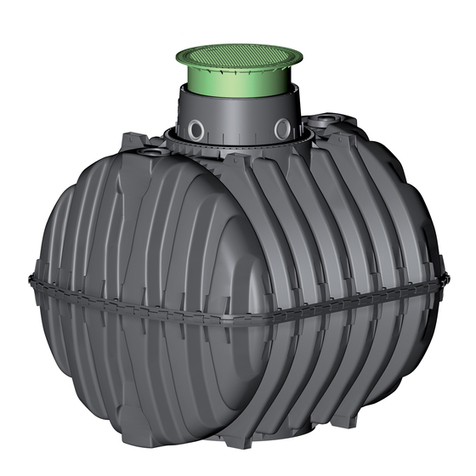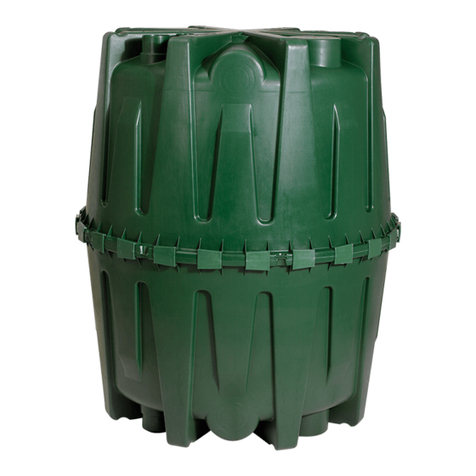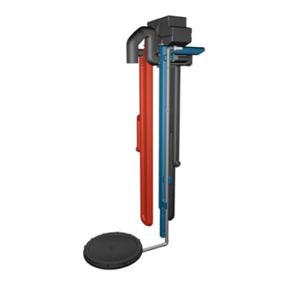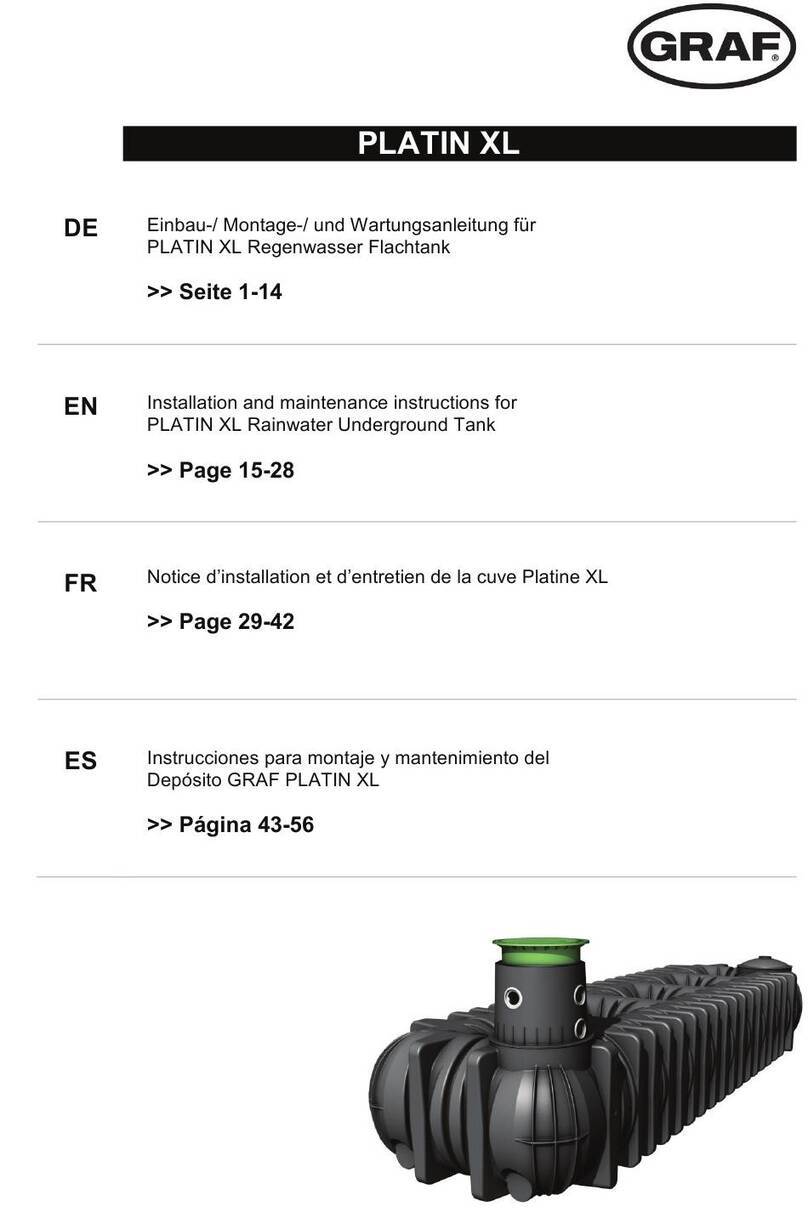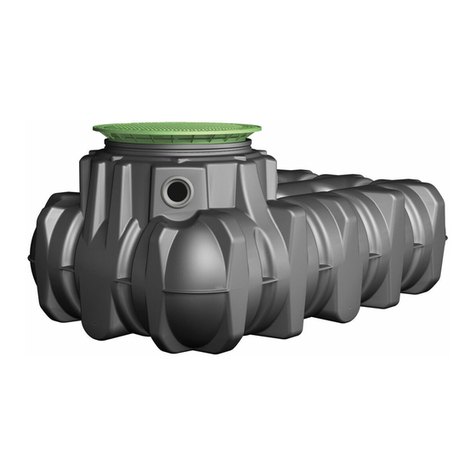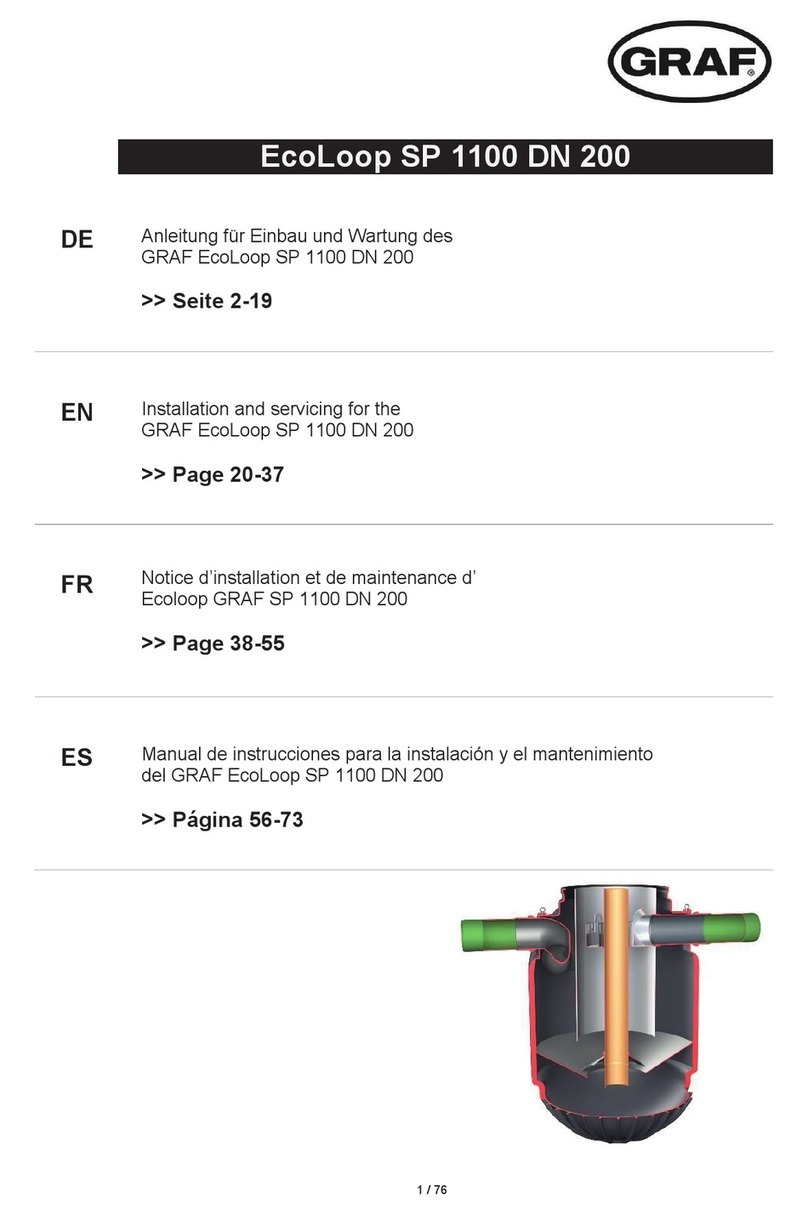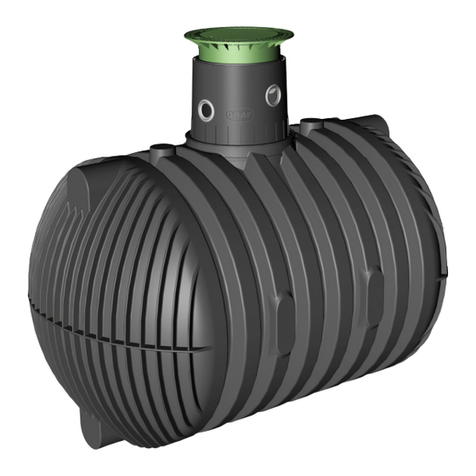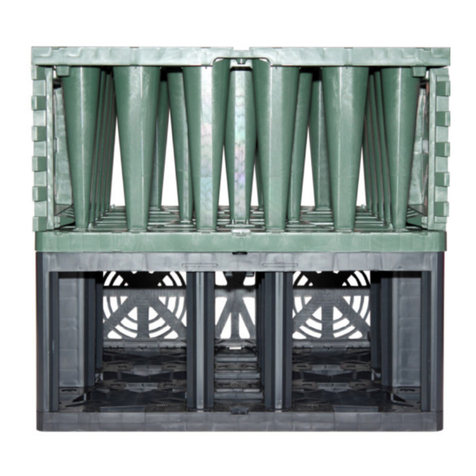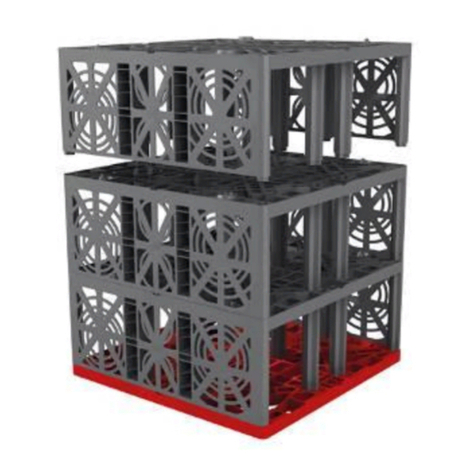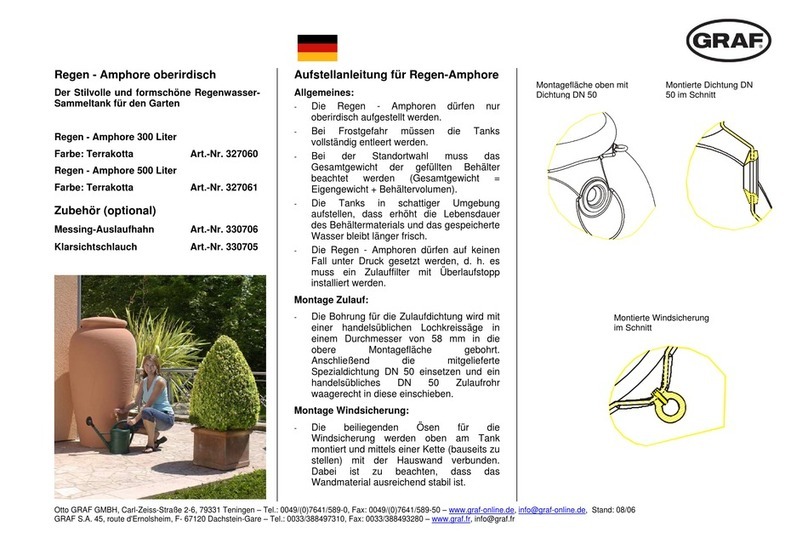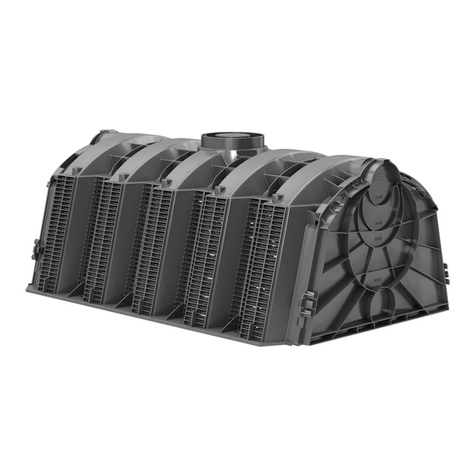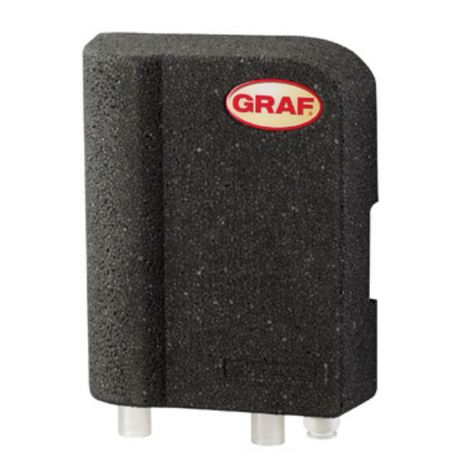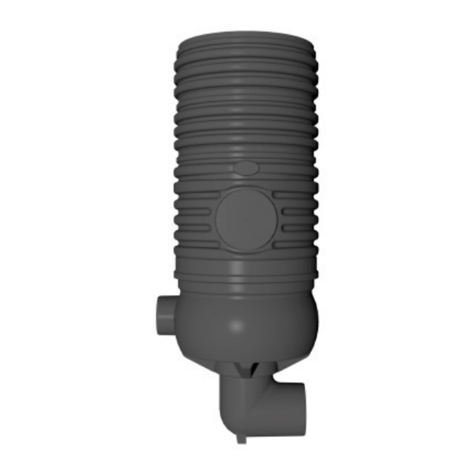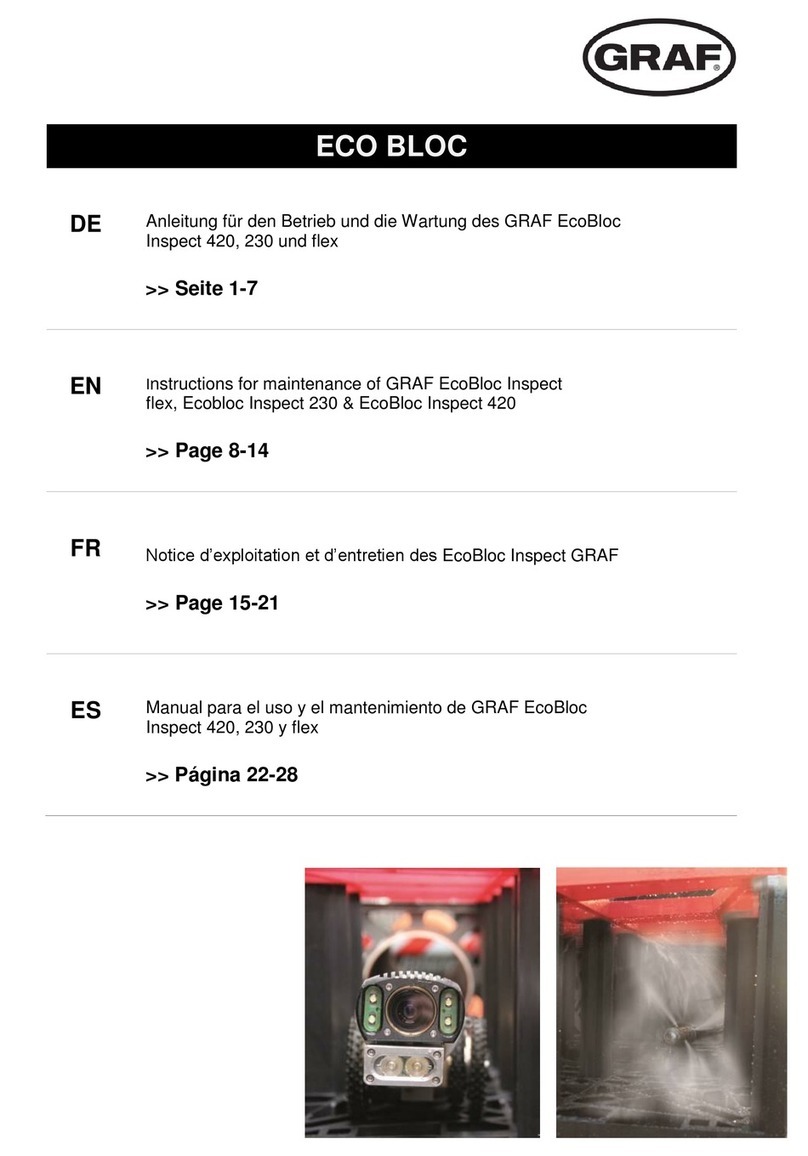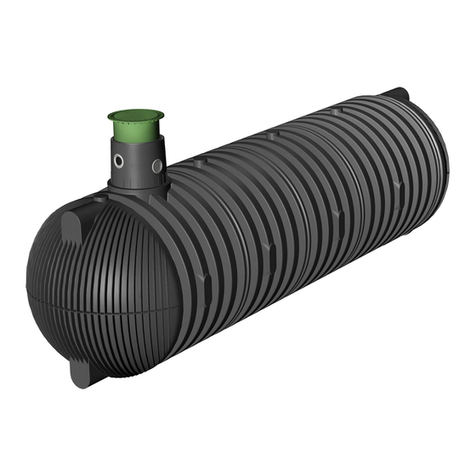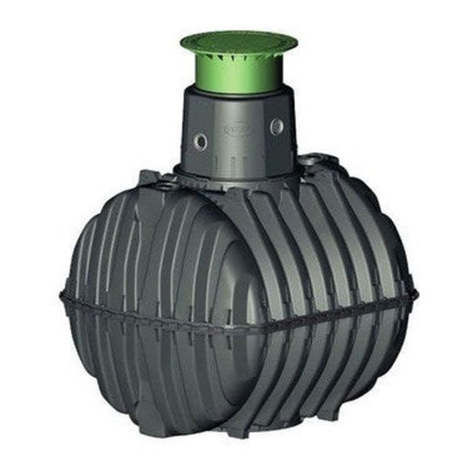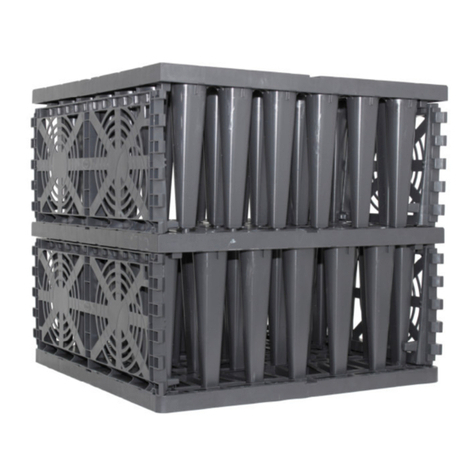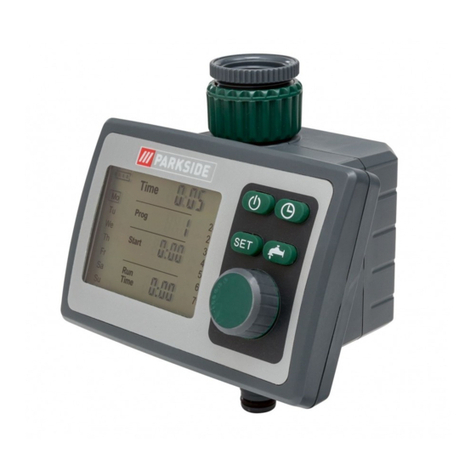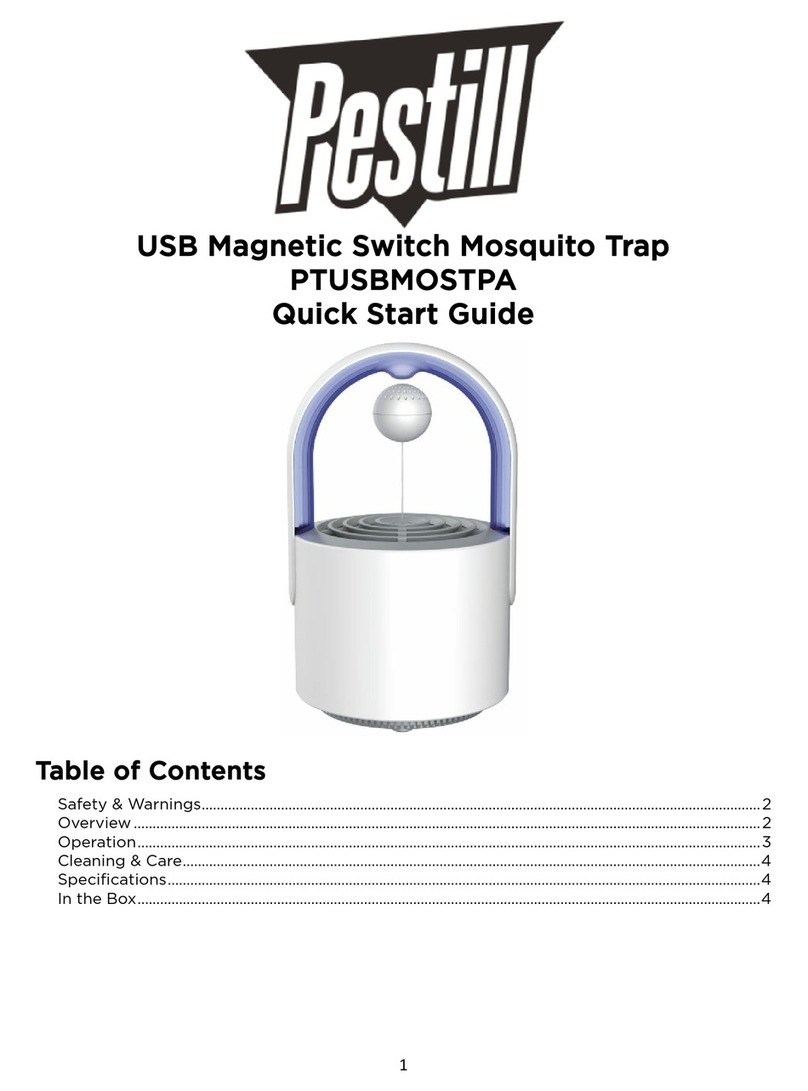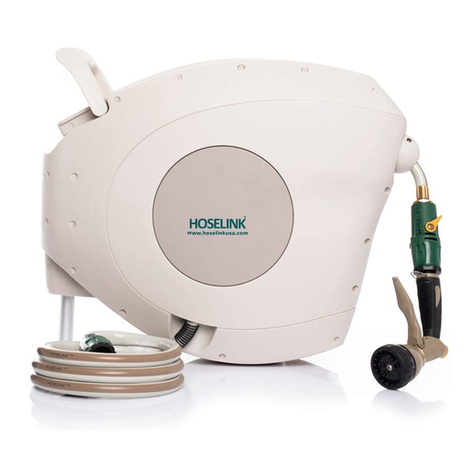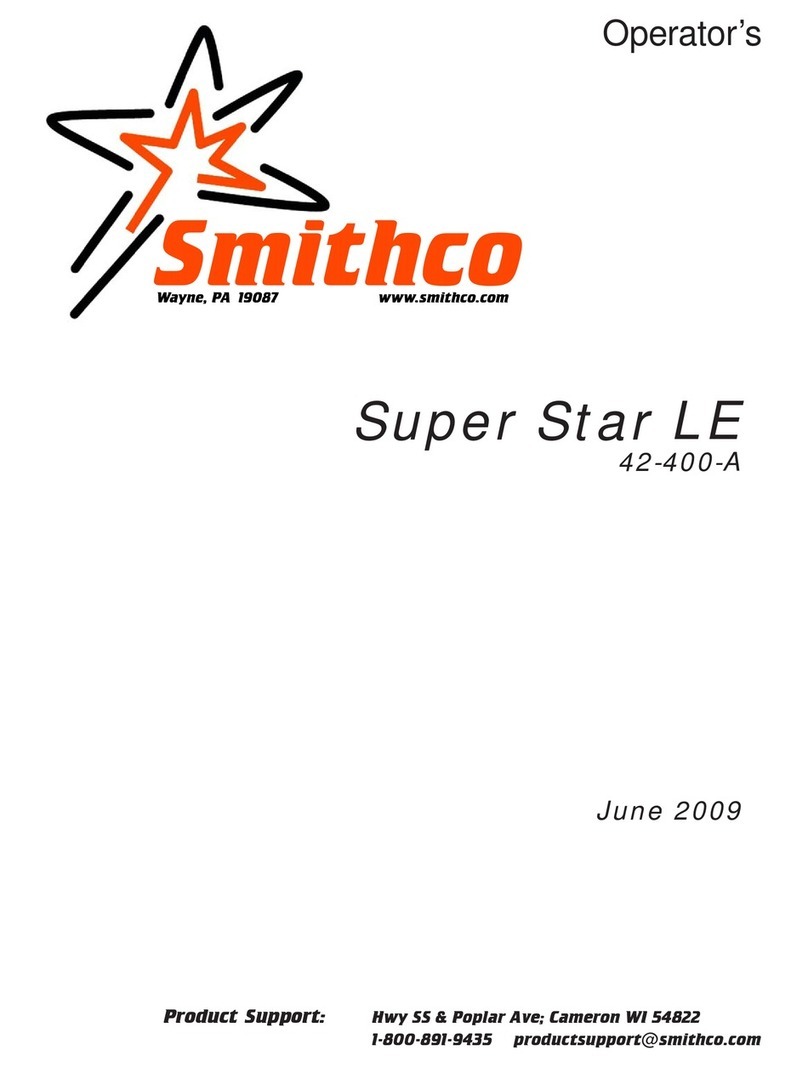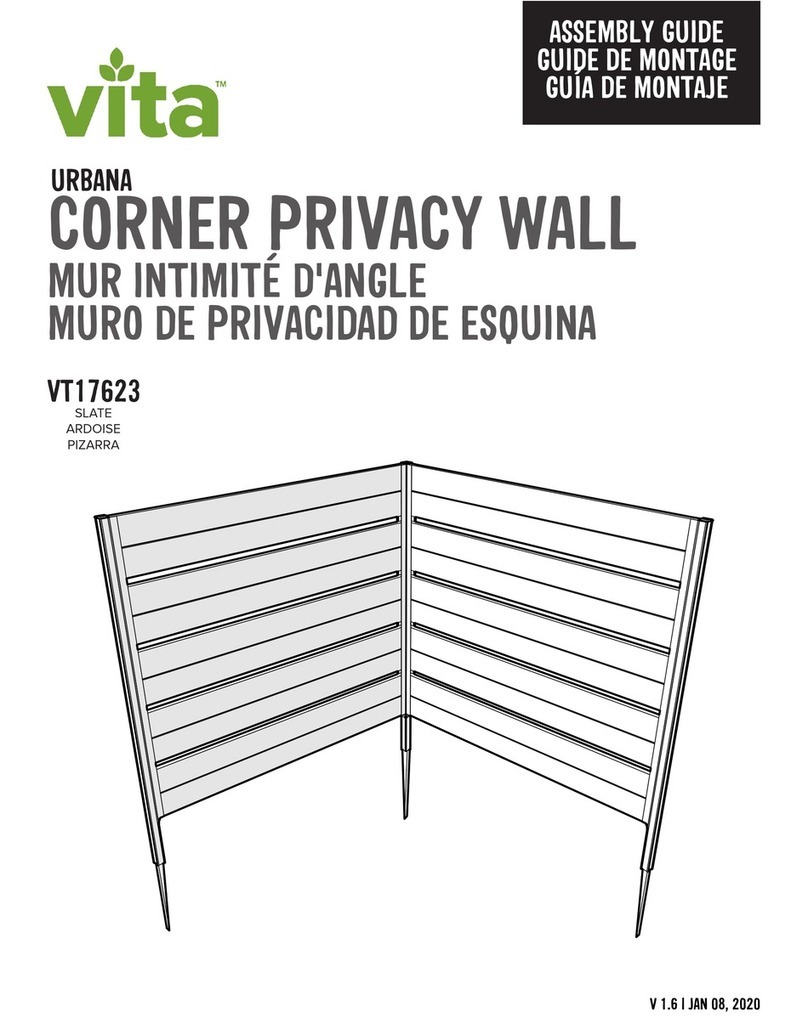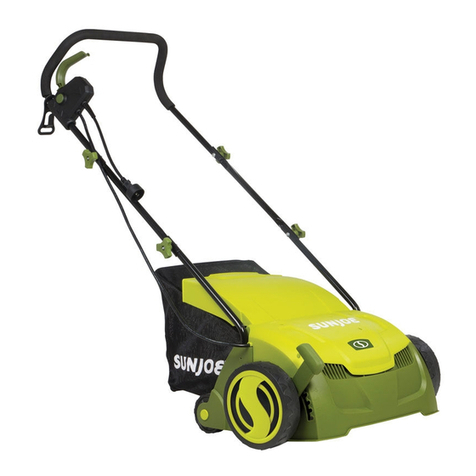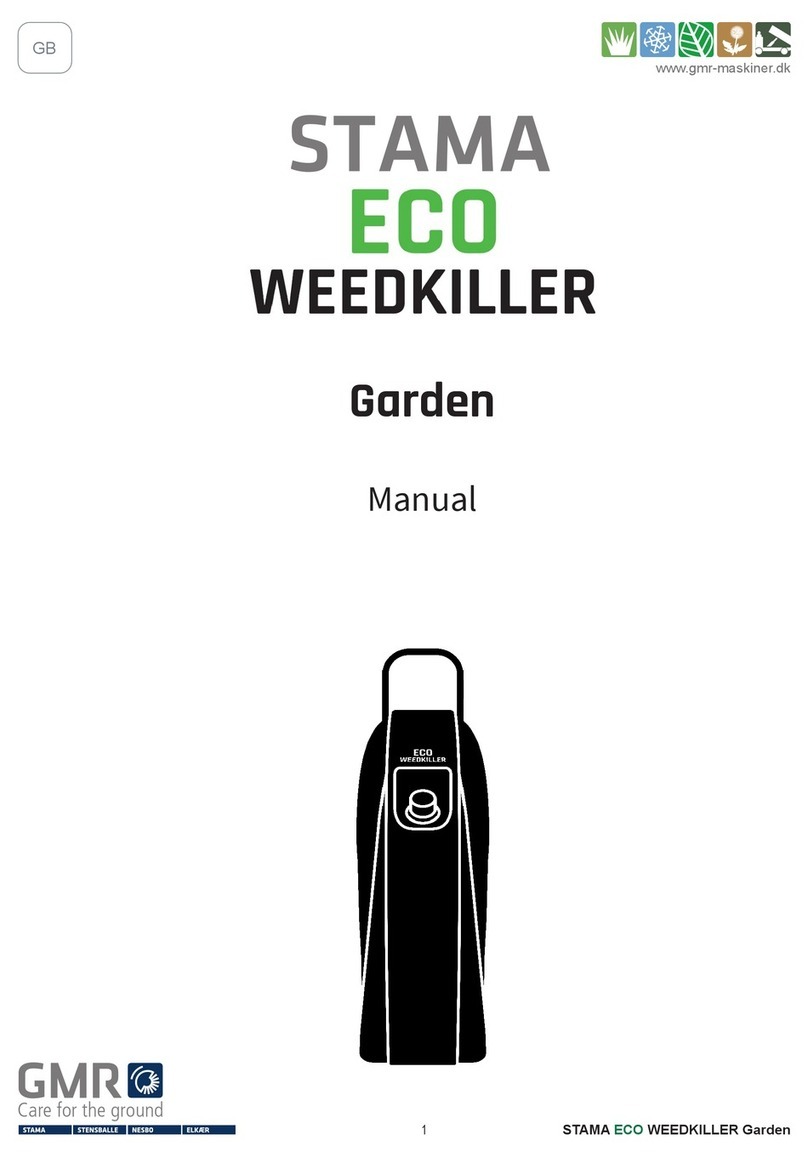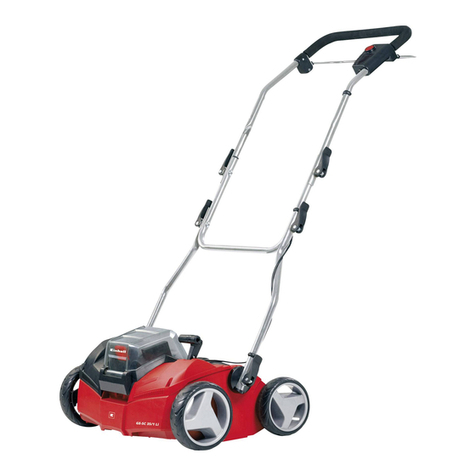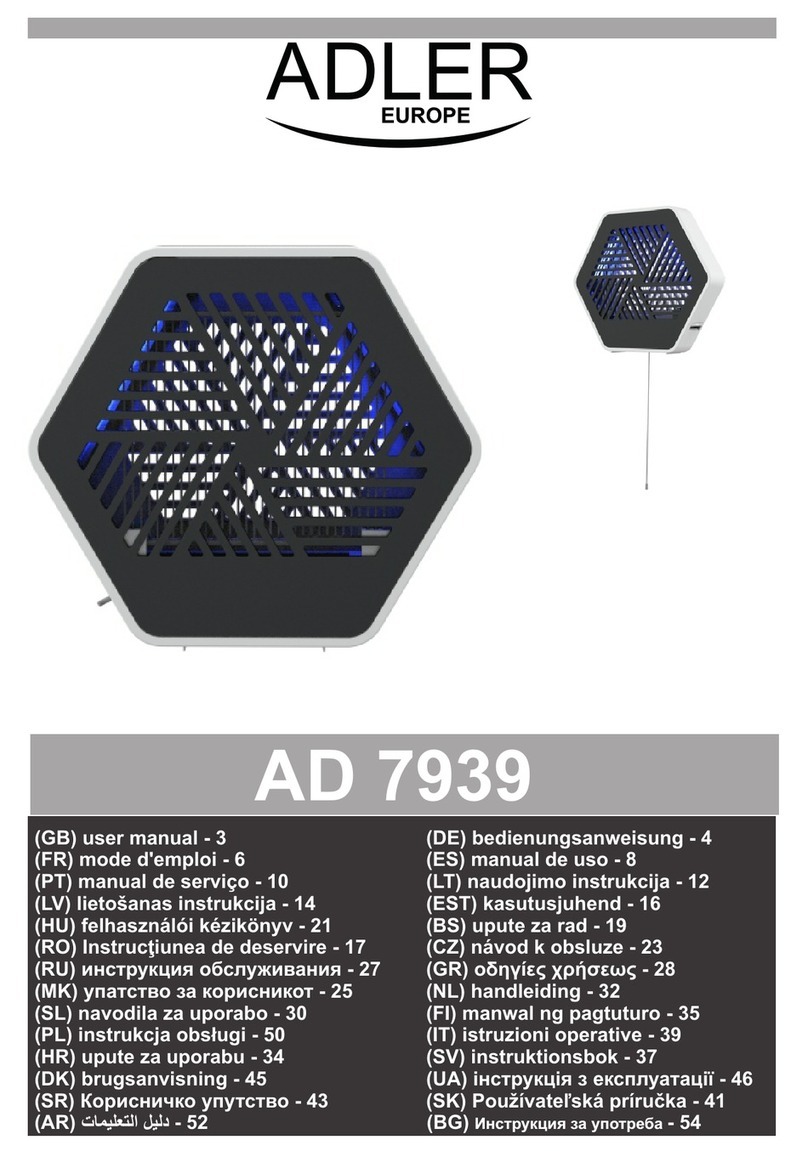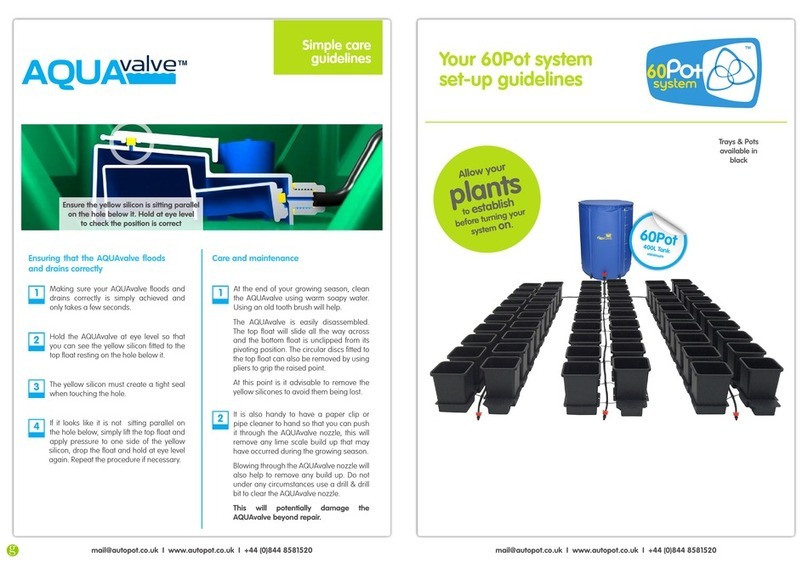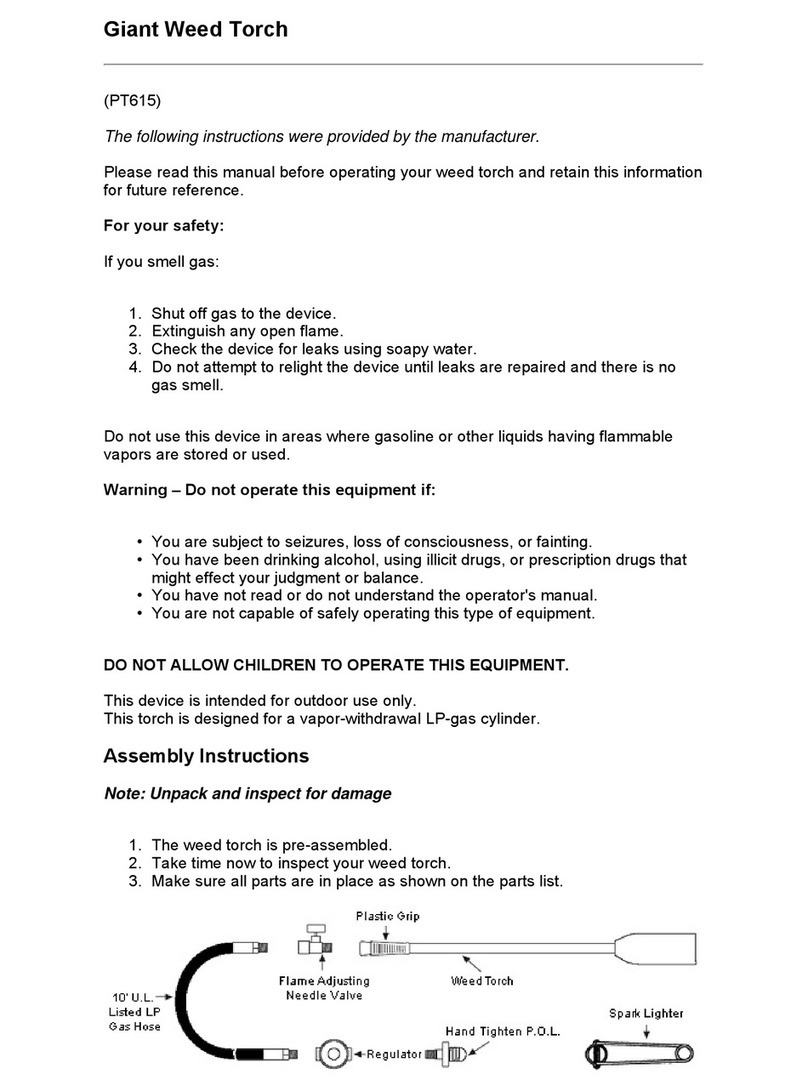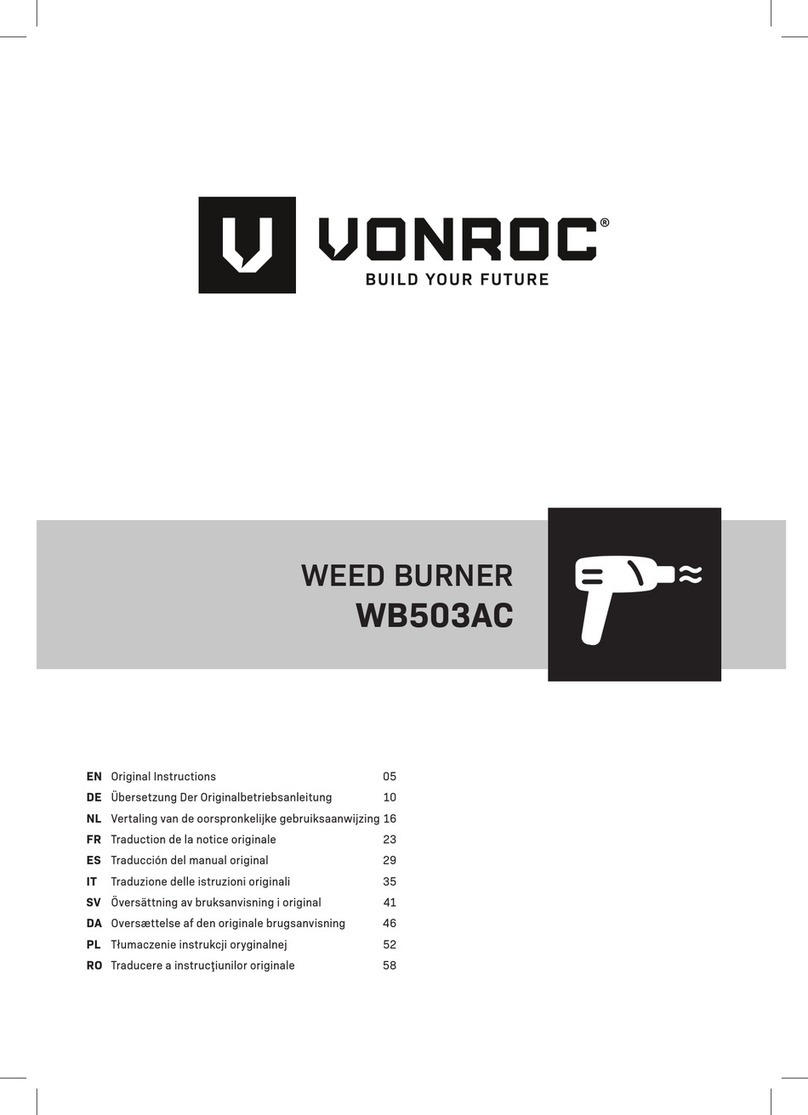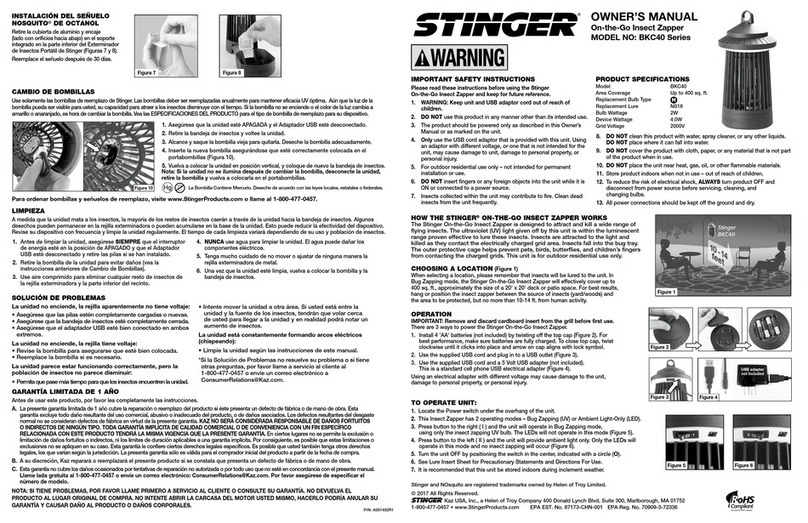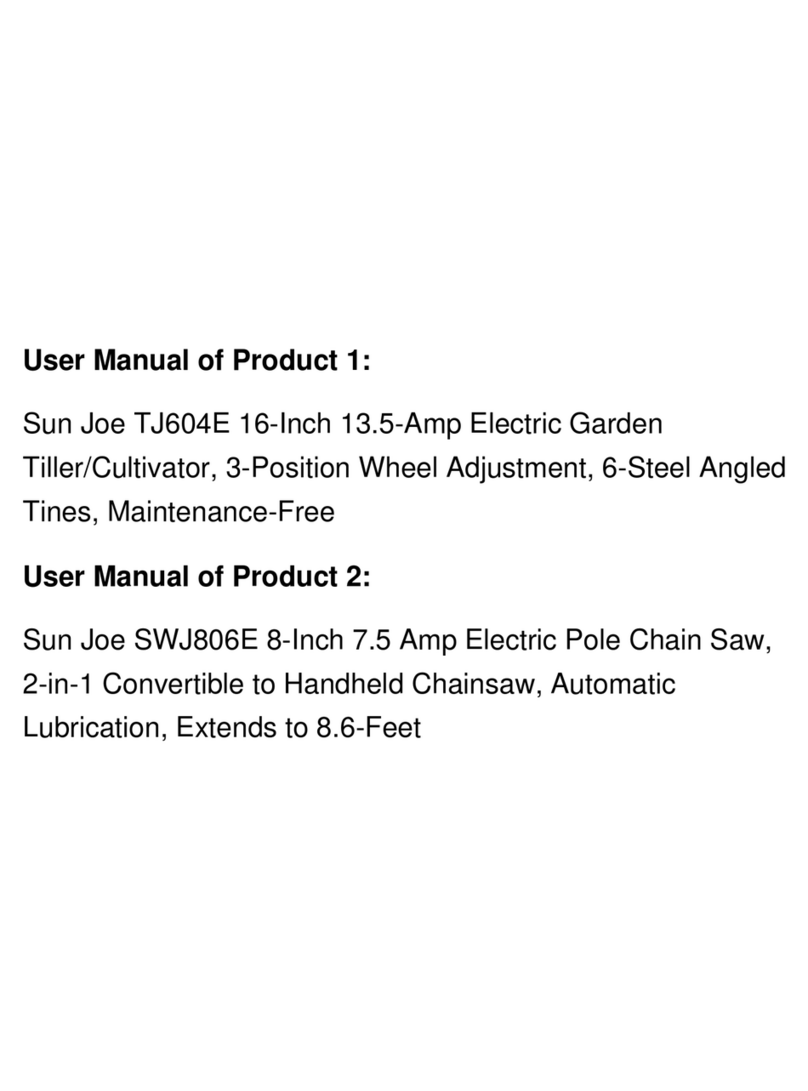
. INSTALLATION & ASSEMBLY
Graf UK Ltd
INSTALLATION & ASSEMBLY
4.4.7 Installation adjacent to surfaces used
by vehicles
If the underground tanks are installed adjacent to
surfaces which are used by vehicles heavier than
passenger cars, the minimum distance away from
these surfaces is at least the depth of the trench.
4.4.8 Connection of several tanks
Two or more tanks are connected via the assembly
surfaces by means of GRAF special seals and basic
pipes (to be provided at construction site).
The apertures must be drilled to the corresponding
size using only the GRAF special crown bit. It must be
ensured that the distance between the tanks is at least
600 mm. The pipes must project at least 200 mm into
the tanks.
4.5 Insertion and filling
The tanks must be inserted, impact-free, into the
prepared trench using suitable equipment. The
tank is filled with 1/3 water before filling in the tank
surrounding.
Afterwards the surrounding (roundgrain gravel, max.
grain size 8/16) is then filled in layers of max. 30 cm
steps and is compacted. The individual layers must be
well-compacted (manuel tamper). Damage to the
tank must be avoided during compaction. Mechanical
compaction machines must not be used under any
circumstances. The surrounding must be at least 500
mm wide.
4.6 Routing connections
All feed and overflow pipes must be routed with a
decline of at least 1% in the direction of flow (possible,
subsequent settling must be taken into consideration
in this case). If the tank overflow is connected to a
public sewer, this must be protected against reflux by
means of a lifting station (mixed sewer) or reflux seal
(pure rainwater sewer) according to DIN 1986.
All suction, pressure and control lines must be routed
in an empty pipe, which must be routed as straight as
possible, without bending, to the tank with a decline.
Necessary bends must be formed using 30° moulded
sections.
Important: The empty pipe must be connected to an
aperture above the max. water level.
4
www.graf.info
7 /
5. Installation and assembly
5.3 Trench
To ensure that sufficient space is available for working, the base area of the trench must exceed the
dimensions of the tank by 500 mm on each side; the distance from solid constructions must be at least 1000
mm.
The trench embankment must be designed so that slippage or collapse of the embankment wall is not to be
anticipated. The construction site must be horizontal and plane and must guarantee sufficient load-bearing
capacity.
The depth of the trench must be dimensioned so that the max. earth coverage (see point 2 – installation
conditions) above the tank is not exceeded. To use the system throughout the entire year, it is necessary to
install the tank and those parts of the system which conduct water in the frost-free area. The frost-free depth
is usually approx. 600 mm – 800 mm; precise information in this regard can be obtained from the
responsible authority.
A layer of compacted, round-grain gravel (grain size 8/16, thickness approx. 150 - 200 mm) is applied as the
foundation.
5.3.1 Slope, embankment, etc.
On installation of the tank in the immediate vicinity (< 5 m)
of a slope, earthen mound or slope, a statically calculated
supporting wall must be erected to absorb the soil
pressure. The wall must exceed the dimensions of the
tank by at least 500 mm in all directions, and must be
located at least 1000 mm away from the tank.
5.3.2 Groundwater and cohesive (water-impermeable)
soils (e.g. clay soil)
If it is anticipated that the tanks will be immersed deeper
into the groundwater than is shown in the adjacent figure,
sufficient dissipation must be ensured. (See table for max.
immersion depth).
Dissipation of the drainage water (e.g. via an annular
drainage system) is recommended in the case of cohesive,
water-impermeable soils.
Tank size 2700 L
700 US-gallons
3750 L
1000 US-gallons
4800 L
1250 US-gallons
6500 L
1700 US-gallons
Immersion depth 700 mm 795 mm 910 mm 1050 mm
5.3.3 Installation adjacent to surfaces used by vehicles
If the underground tanks are installed adjacent to surfaces
which are used by vehicles heavier than passenger cars,
the minimum distance away from these surfaces is at least
the depth of the trench.
>800 <1800
www.graf.info
8 /
5. Installation and assembly
5.3.4 Connection of several tanks
Two or more tanks are connected via the assembly surfaces by means of GRAF special seals and basic
pipes (to be provided at construction site).
The apertures must be drilled to the
corresponding size using only the GRAF
special crown bit. It must be ensured that
the distance between the tanks is at least
600 mm. The pipes must project at least
200 mm into the tanks.
5.4 Insertion and filling
The tanks must be inserted, impact-free,
into the prepared trench using suitable
equipment. The tank is filled with 1/3
water before filling in the tank surrounding.
Afterwards the surrounding (roundgrain
gravel, max. grain size 8/16) is then filled
in layers of max. 30 cm steps and is
compacted. The individual layers must be
well-compacted (manuel tamper).
Damage to the tank must be avoided
during compaction. Mechanical
compaction machines must not be used
under any circumstances. The
surrounding must be at least 500 mm
wide.
5.5 Routing connections
All feed and overflow pipes must be routed
with a decline of at least 1% in the direction
of flow (possible, subsequent settling must
be taken into consideration in this case). If
the tank overflow is connected to a public
sewer, this must be protected against reflux
by means of a lifting station (mixed sewer)
or reflux seal (pure rainwater sewer)
according to DIN 1986.
All suction, pressure and control lines must
be routed in an empty pipe, which must be
routed as straight as possible, without
bending, to the tank with a decline.
Necessary bends must be formed using 30°
moulded sections.
Important: The empty pipe must be
connected to an aperture above the max.
water level.
Sewe
www.graf.info
8 /
5. Installation and assembly
5.3.4 Connection of several tanks
Two or more tanks are connected via the assembly surfaces by means of GRAF special seals and basic
pipes (to be provided at construction site).
The apertures must be drilled to the
corresponding size using only the GRAF
special crown bit. It must be ensured that
the distance between the tanks is at least
600 mm. The pipes must project at least
200 mm into the tanks.
5.4 Insertion and filling
The tanks must be inserted, impact-free,
into the prepared trench using suitable
equipment. The tank is filled with 1/3
water before filling in the tank surrounding.
Afterwards the surrounding (roundgrain
gravel, max. grain size 8/16) is then filled
in layers of max. 30 cm steps and is
compacted. The individual layers must be
well-compacted (manuel tamper).
Damage to the tank must be avoided
during compaction. Mechanical
compaction machines must not be used
under any circumstances. The
surrounding must be at least 500 mm
wide.
5.5 Routing connections
All feed and overflow pipes must be routed
with a decline of at least 1% in the direction
of flow (possible, subsequent settling must
be taken into consideration in this case). If
the tank overflow is connected to a public
sewer, this must be protected against reflux
by means of a lifting station (mixed sewer)
or reflux seal (pure rainwater sewer)
according to DIN 1986.
All suction, pressure and control lines must
be routed in an empty pipe, which must be
routed as straight as possible, without
bending, to the tank with a decline.
Necessary bends must be formed using 30°
moulded sections.
Important: The empty pipe must be
connected to an aperture above the max.
water level.
Sewe
www.graf.info
8 /
5. Installation and assembly
5.3.4 Connection of several tanks
Two or more tanks are connected via the assembly surfaces by means of GRAF special seals and basic
pipes (to be provided at construction site).
The apertures must be drilled to the
corresponding size using only the GRAF
special crown bit. It must be ensured that
the distance between the tanks is at least
600 mm. The pipes must project at least
200 mm into the tanks.
5.4 Insertion and filling
The tanks must be inserted, impact-free,
into the prepared trench using suitable
equipment. The tank is filled with 1/3
water before filling in the tank surrounding.
Afterwards the surrounding (roundgrain
gravel, max. grain size 8/16) is then filled
in layers of max. 30 cm steps and is
compacted. The individual layers must be
well-compacted (manuel tamper).
Damage to the tank must be avoided
during compaction. Mechanical
compaction machines must not be used
under any circumstances. The
surrounding must be at least 500 mm
wide.
5.5 Routing connections
All feed and overflow pipes must be routed
with a decline of at least 1% in the direction
of flow (possible, subsequent settling must
be taken into consideration in this case). If
the tank overflow is connected to a public
sewer, this must be protected against reflux
by means of a lifting station (mixed sewer)
or reflux seal (pure rainwater sewer)
according to DIN 1986.
All suction, pressure and control lines must
be routed in an empty pipe, which must be
routed as straight as possible, without
bending, to the tank with a decline.
Necessary bends must be formed using 30°
moulded sections.
Important: The empty pipe must be
connected to an aperture above the max.
water level.
Sewe
Drainage
solution





















